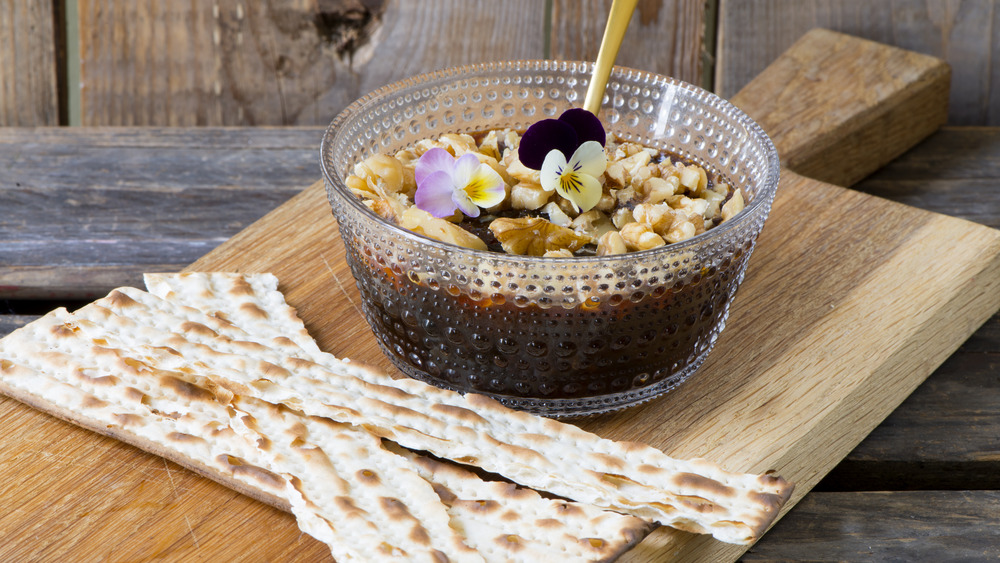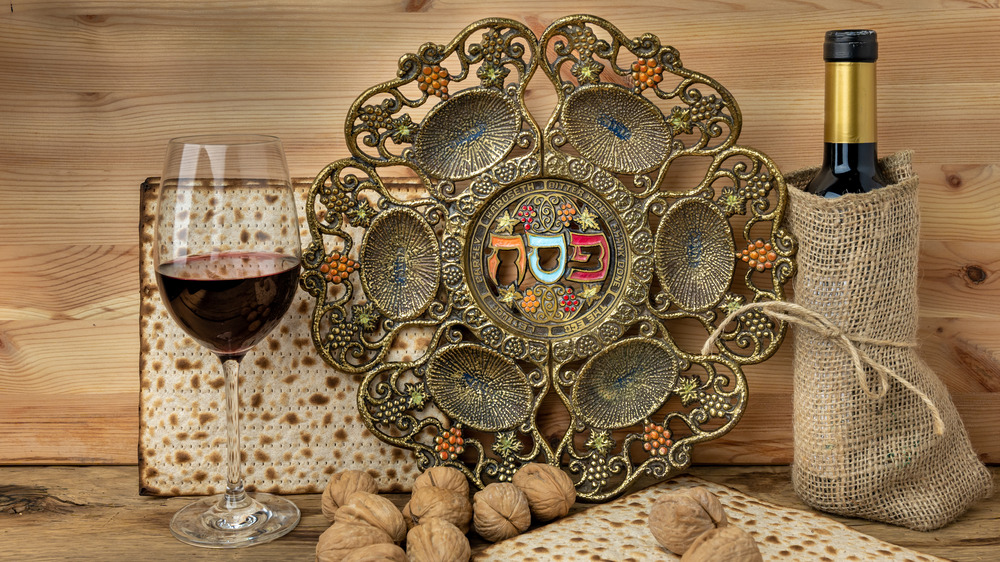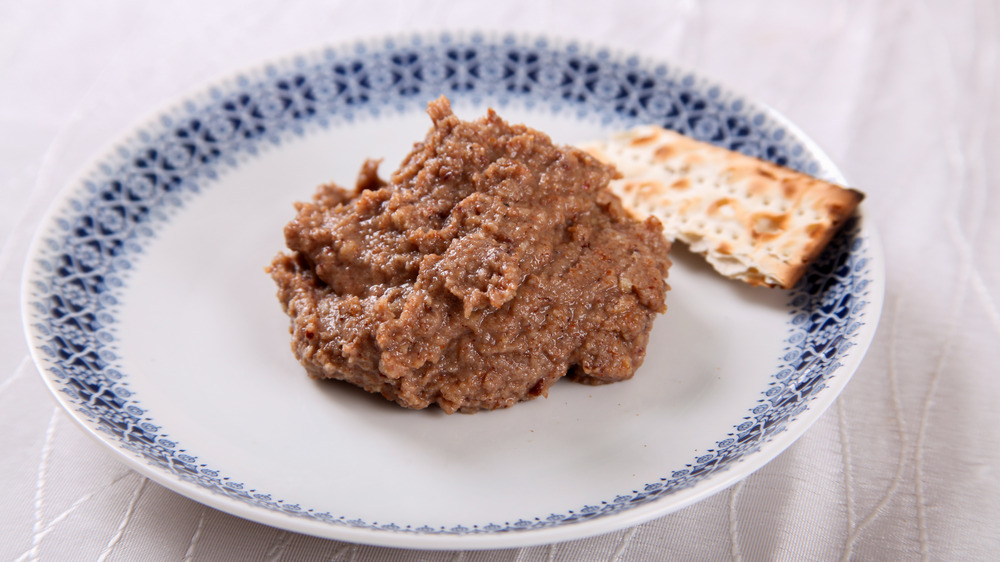What Is Charoset And When Do You Eat It?
A deeply important, traditional, and symbolic inclusion on the Passover seder plate, charoset is a sweet condiment or relish that is delicious any day of the year. At its basis, charoset is a combination of apples, nuts, cinnamon, and sweet wine, and many recipes also include sugar (via Eater). It can be either smooth or super chunky. It can be very wine-forward or primarily apple-based. There is no right or wrong way to prepare this cherished dish — it's incredible no matter the iteration.
It is often enjoyed with bitter herbs, matzo — or for many charoset-lovers — enjoyed directly out of the bowl. It is sweet but not saccharine, crunchy and crisp from the apple and nuts, and the cinnamon and wine round out the flavors. Some chop by hand, while other families tend to use food processors (via Epicurious). Of course, the wine should be kosher for Passover and is usually red. Different recipes call for various types of apples. Typically, charoset should also sit for a few hours to let the flavors meld before serving.
Are there other variations of charoset?
Charoset is said to date as far back as the first century, according to Eater, which describes charoset as a "sticky, granular mixture of fruit and nuts." Charoset actually means "clay," according to Tablet Mag, and The Kitchn states that charoset is "technically used on the Seder plate to resemble the mortar and brick made by the Jews when they were slaves in Egypt under Pharaoh."
The Spruce Eats states that charoset is "also an amazing snapshot of the Jewish diaspora, as Jewish communities around the world have their own unique takes on charoset, driven by the ingredients that were available to them." For example, Israeli charoset contains orange juice, raisins, or banana, while some Italian charoset contain chestnuts, apricots, or pistachios. Tablet Mag even has a list of 20 individual charoset recipes from around the world, including recipes from Mexico City and Brazil to Calcutta and New Orleans. Ben and Jerry's Israel even has a charoset ice cream for Passover (via PRI).
What is the history of charoset?
There are eight main foods served during Passover, each boasting great historic symbolism, according to Eater. Traditionally, charoset is eaten in conjunction with the other foods on the Seder plate. Forward notes that "charoset was used as a dipping condiment for the greens" and was traditionally pounded into more of a paste than a relish. The charoset can "remind us of the joy and sweetness of life, present even in the most bitter circumstances."
The inclusion of the apples is said to symbolize the story of Israelite women giving birth under apple trees and the charoset is traditionally "ground into a paste ... to have the consistency of clay," according to Chabad. When charoset is eaten with bitter herbs, it represents balance. The cinnamon is said to represent the straw Hebrews used to build Pharaoh's palace in Egypt, according to Jamie Geller. Beautifully encapsulated by Forward, charoset is "an ambiguous symbol of slavery and freedom, of boundaries all mixed up and transgressed."


